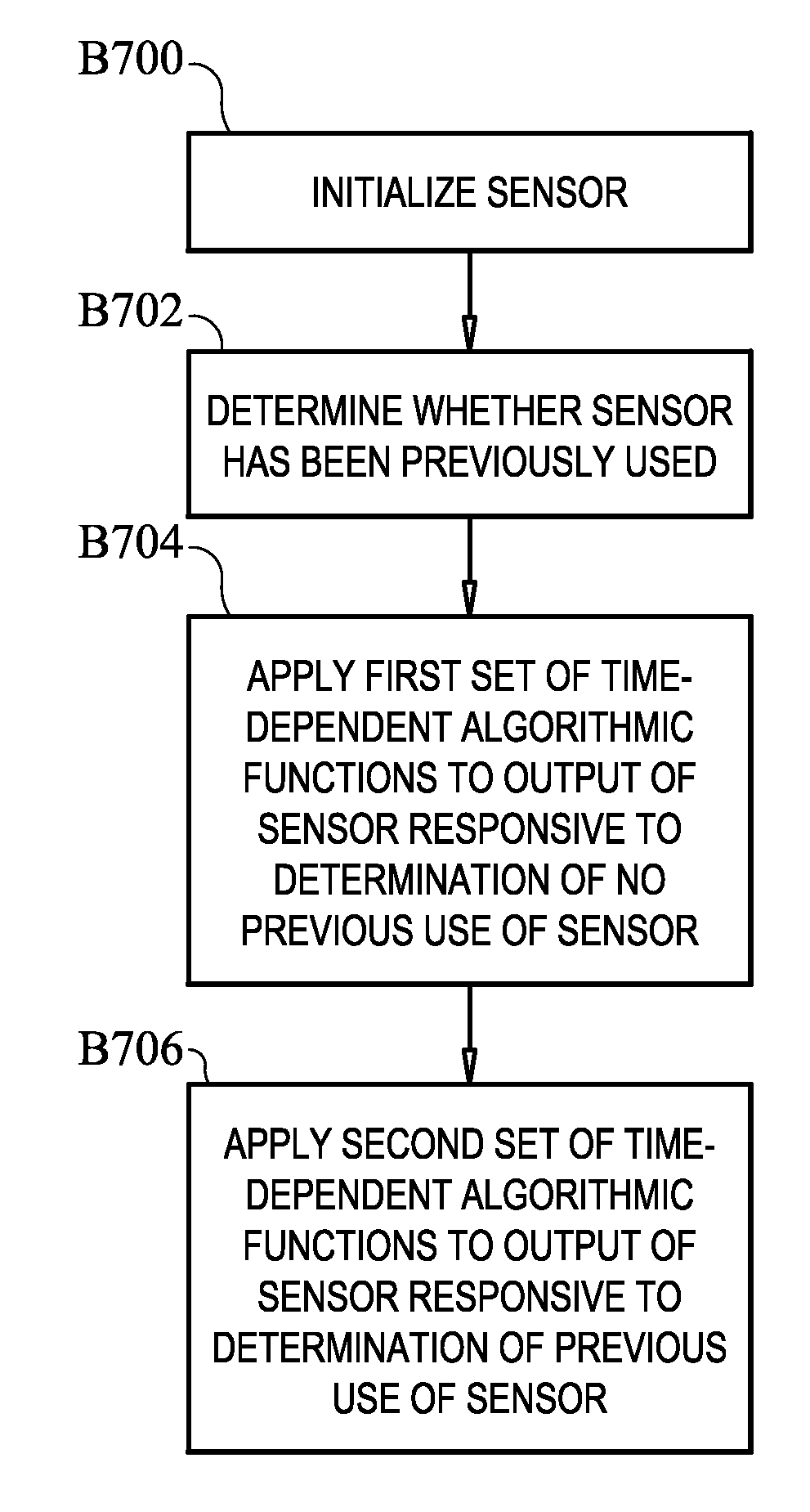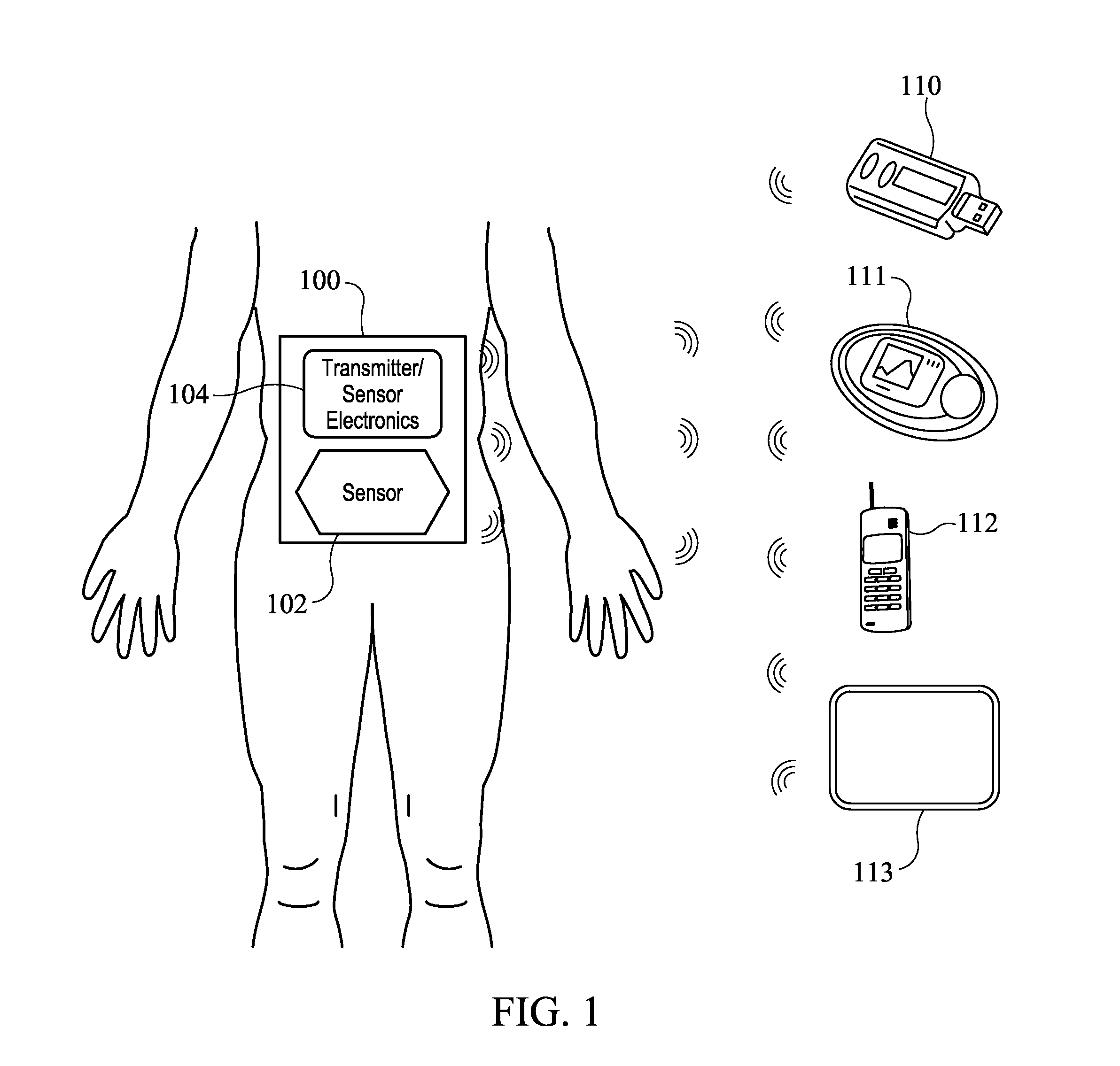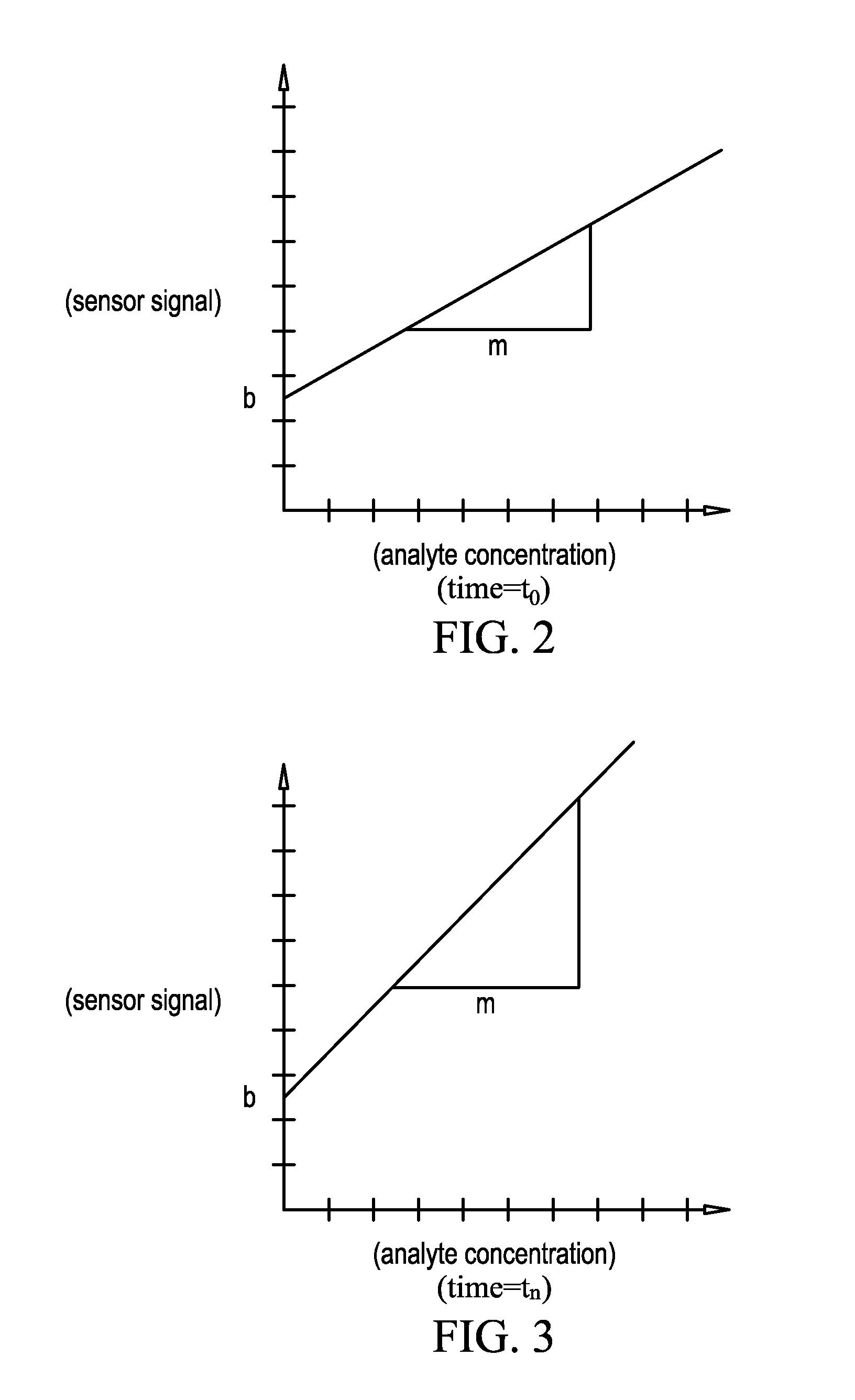Systems and methods for processing analyte sensor data
a technology of analyte sensor and processing method, which is applied in the field of systems and methods for processing analyte sensor data, can solve the problems of not knowing if the blood glucose value is going up (higher), affecting the patient's health, and causing dangerous side effects
- Summary
- Abstract
- Description
- Claims
- Application Information
AI Technical Summary
Benefits of technology
Problems solved by technology
Method used
Image
Examples
Embodiment Construction
,” one will understand how the features of the present embodiments provide the advantages described herein.
[0008]One aspect of the present embodiments includes the realization that, with some sensors, typically the greatest rate of drift occurs during the first day to three days after implantation of a new sensor, after which the rate of change of drift typically levels off. Thus, the need to recalibrate the sensor is greatest during the first day to three days after implantation. However, lack of host compliance can lead to difficulty in properly recalibrating the sensor. For example, current government regulations require that today's sensors be replaced at mandated intervals. However, the more sensors a host uses, the more sensors he or she must purchase. Thus, there is an economic incentive for hosts to reuse old sensors rather than always implanting a new sensor at the end of each life cycle. If it is assumed that each sensor is new when it is initialized, improper assumptions ...
PUM
 Login to View More
Login to View More Abstract
Description
Claims
Application Information
 Login to View More
Login to View More - R&D
- Intellectual Property
- Life Sciences
- Materials
- Tech Scout
- Unparalleled Data Quality
- Higher Quality Content
- 60% Fewer Hallucinations
Browse by: Latest US Patents, China's latest patents, Technical Efficacy Thesaurus, Application Domain, Technology Topic, Popular Technical Reports.
© 2025 PatSnap. All rights reserved.Legal|Privacy policy|Modern Slavery Act Transparency Statement|Sitemap|About US| Contact US: help@patsnap.com



